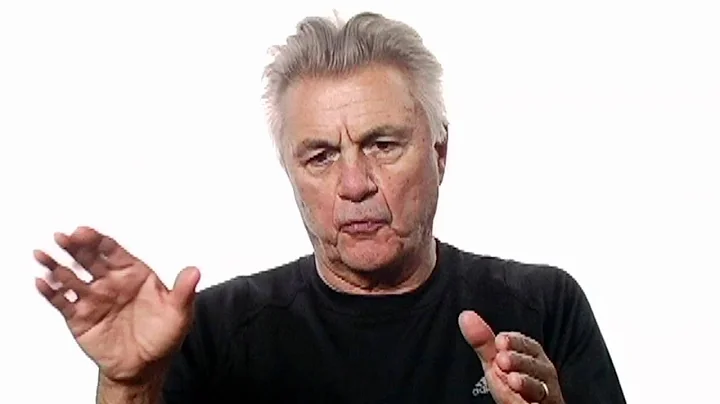 . Form practice
. Form practice
 . Training method: Change the original composition and copy it into styles such as square, fan, vertical axis, central hall, couplet, etc.
. Training method: Change the original composition and copy it into styles such as square, fan, vertical axis, central hall, couplet, etc.
2. Training purpose: Through the re-establishment of the layout, we can understand and improve the corresponding changes in the factors of single-word structure, word groups and lines.
3. Steps and requirements:
(1) Take a certain work of a certain calligrapher as an example, and copy it strictly and ensure that factors such as the layout, character group, line number, virtual and real relationship, and writing rhythm are as close to the original work as much as possible.
(2) Analyze and master the original composition structure, general rules, and draw a layout breakdown diagram.
(3) Design the layout diagrams of the square, fan, vertical scroll, central hall, couplet, etc., and transform the original work into the above forms.

2. Filling exercises
 . Training method: According to the principle of from easy to difficult, cover several words, one line and one paragraph of the original work in turn, and perform supplementary words, lines, and paragraph exercises. The first level is to supplement the content of the original work, and the second level is to supplement any content, but the number of words blocked must be combined.
. Training method: According to the principle of from easy to difficult, cover several words, one line and one paragraph of the original work in turn, and perform supplementary words, lines, and paragraph exercises. The first level is to supplement the content of the original work, and the second level is to supplement any content, but the number of words blocked must be combined.
2. Training purpose: Through fill-up exercises, students' understanding and mastery of the original post brushwork and character composition.
3. Training steps
(1) Carefully observe and understand the characteristics of a post (stele) and find the general rules.
(2) Make their word axis, word group axis and line axis.
(3) Cover a certain word, word group, line and paragraph back.
(4) fills the blocked position with non-original post (stele) content, words, words, sentences, etc.
(5) Check the similarity between some brushwork, character group, method and other factors and the original work.

3. Style practice
 . Training method: Choose two works of the calligrapher from different periods for style transformation exercises, that is, copy the content of the B post in the style of A post, or copy the content of the A post in the style of B post; select the works of different calligraphers for style transformation exercises. That is, write the content of a certain work of a calligrapher B in the style of calligrapher B or write the content of a calligrapher A in the style of calligrapher B.
. Training method: Choose two works of the calligrapher from different periods for style transformation exercises, that is, copy the content of the B post in the style of A post, or copy the content of the A post in the style of B post; select the works of different calligraphers for style transformation exercises. That is, write the content of a certain work of a calligrapher B in the style of calligrapher B or write the content of a calligrapher A in the style of calligrapher B.
2. Training purpose: to train students to have a comprehensive understanding and grasp of the works of a certain period or the overall style of a certain calligrapher.
3. Steps and requirements
(1) Select a certain calligrapher such as Mi Fu different period works " Shu Su Tie " and "Tiao Xi Tie", and select different calligraphers such as Wang Xizhi and Yan Zhenqing 's works "Preface to the Holy Teaching" and " Commemorative Nephew Manuscript " to conduct an overall style analysis to clarify the characteristics of each other. (2) Style conversion copy
(3) Compare the style commonalities and characteristics between copy and sample, and carry out targeted intensive exercises.

4. Space practice
 . Training method: Reconstruct the local and overall space of the original post (stele).
. Training method: Reconstruct the local and overall space of the original post (stele).
2. Training purpose: Feel and analyze autonomy and paragraphs, and reconstruct the new style formed by the combination.
3. Steps and requirements
(1) Cut the original post (stele) into groups and branches, re-collect, increase or decrease the font spacing and line spacing when collage, and make adjustments when copying, and try to achieve harmony in various relationships.
(2) Observe and analyze the different feelings given by copy and original post space and compare the differences in mood in various states.

5. Lift and press practice
 . Training method: Take a classic work as an example, practice close to the thickness of the original work, lift the pen (thinner than the original work), and press the pen (thicker than the original work).
. Training method: Take a classic work as an example, practice close to the thickness of the original work, lift the pen (thinner than the original work), and press the pen (thicker than the original work).
2. Training purpose: judge and control the power used when writing and recognize the impact of changing the thickness of the original line on the style of the work.
3. Steps and requirements
(1) Use three different ways to copy a classic work, and observe the impact of different ways to work style.
(2) Use three papers with different finishes and water permeability to carry out pressing and copying and compare them.
(3) Use three brushes with different hardness to convert and copy.

6. Rhythm practice
 . Training method: Take a classic work as an example to perform exercises to slow down, approach, and speed up the rhythm conversion.
. Training method: Take a classic work as an example to perform exercises to slow down, approach, and speed up the rhythm conversion.
2. Training purpose: clarify and understand the impact of different writing rhythms on the style of the work.
3. Steps and requirements
(1) The pace of copying a certain post slows down, and the internal speed of each line slows down.
(2) Copy a certain post, approaching the speed of the original post, and try not to make obvious speed changes.
(3) Copying a certain post will speed up and the speed will change strongly.
(4) Check the copywriting from the two aspects of the feeling when writing and the texture of the lines, find out one that is more consistent with one's personality and inner rhythm, and think about the reasons.

7. ink method practice
 . Training method: copy the same classic work in different ink colors.
. Training method: copy the same classic work in different ink colors.
2. Training purpose: to understand and understand the richness of ink changes in calligraphy works and its impact on style formation.
3, steps and requirements
(1) One stroke practice.
(2) Write the same classic work in different ink colors.
(3) ink exercise.
(4) Ink dot change exercise.



![On Writing: Subtext (and how to use it)! [ Tarantino | Thrones | Gatsby ] - DayDayNews](https://i.ytimg.com/vi/58FyvzttlIg/hq720.jpg?sqp=-oaymwEcCNAFEJQDSFXyq4qpAw4IARUAAIhCGAFwAcABBg==&rs=AOn4CLBfOGnWnraSxYimgs9dAYyEcjATVg)







